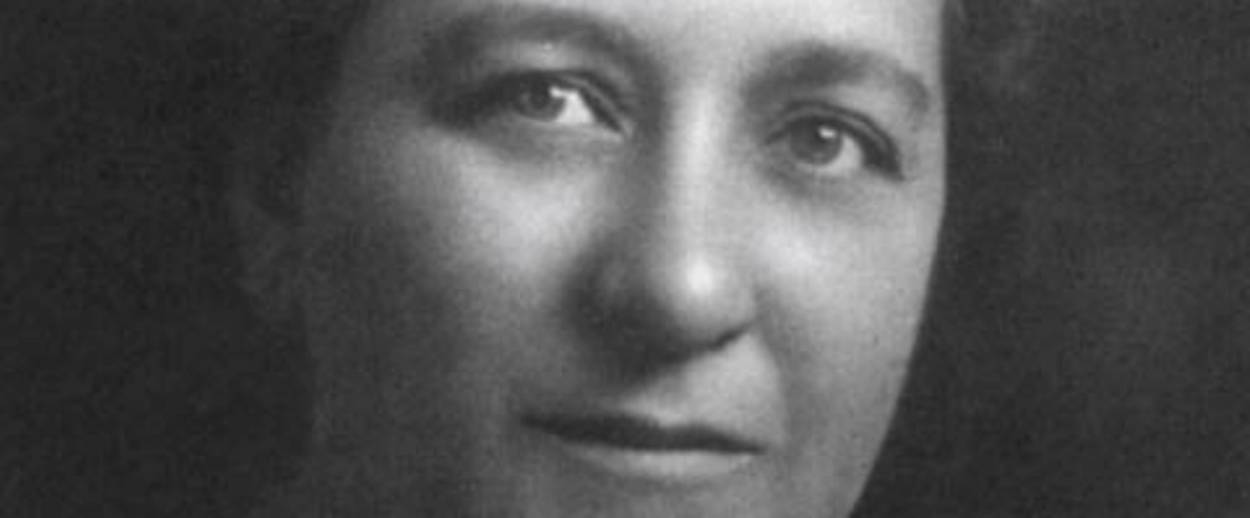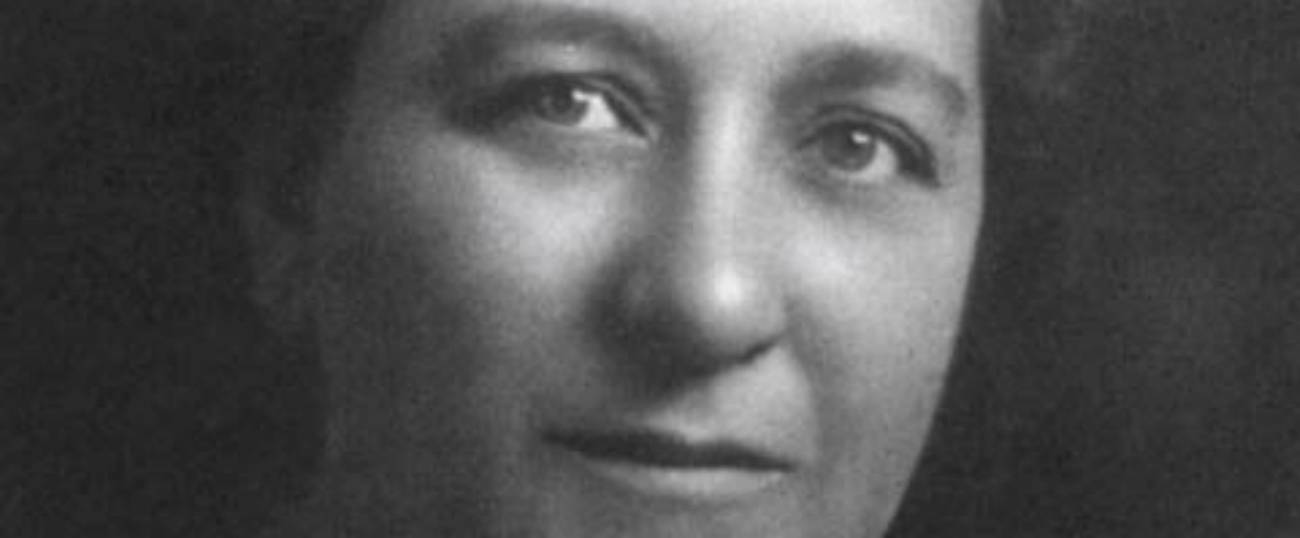Meet the Jazz-Age Jewess Behind NYC’s Repressive Cabaret Law
Dance-hall reformer Belle Moskowitz was once the most powerful woman in Democratic politics.




Last week, NYC Mayor Bill de Blasio signed legislation to create an Office of Nightlife, taking steps to repeal the city’s archaic “Cabaret Law.” Established in 1926, it’s colloquially called the “Footloose Law,” because it prevents dancing in NYC without a special (expensive, paperwork-laden, difficult-to-actually-get) license from the Department of Consumer Affairs. Opponents have long called the law racist, designed to prevent interracial dancing and miscegenation in jazz-age Harlem. The Cabaret Law established more restrictive rules for the presence of saxophones (accordions, of course, were fine), and for having more than three musicians on stage at once. The 1926 Municipal Council meeting minutes sniffed, “Your Committee believes that these ‘wild’ people should not be tumbling out of these resorts at six or seven o’clock in the morning to the scandal and annoyance of decent residents on their way to daily employment.”
Over time, the city stopped enforcing the law, what with this being the city that doesn’t sleep, but when Rudolph Giuliani took office, he began cracking down on nightlife again. Shockingly, his efforts felt disproportionately aimed at venues that were primarily black and/or gay.
As with so many things in life, though, the original Cabaret Law of 1926 was fueled by motives both good and ill, by both morality and hypocrisy. One of the main forces behind the passage of the law was Belle Moskowitz, one of the most powerful women in American politics at the time. A lifelong progressive, she saw the law as a natural continuation of her lifelong efforts to help the young and poor.
Born Belle Lindner in Harlem in 1877, she attended Columbia University’s Teachers College, flirted with a life in the theater, and then became a social worker at Educational Alliance on the Lower East Side. At the EA, she served as “Directress of Women’s Work” and wrote articles about how social clubs could have a positive impact on girls’ lives and how women were important in shaping the culture of communities. She fought for girls to lead cultured, intellectual lives, which she thought would help them make it out of the Lower East Side ghetto.
In 1903, Belle married Charles Israels. Like a proper lady of her era, she quit her job, but she continued to volunteer. “To think of others is as natural to the Jewish woman as to breathe,” she wrote. “She gives and has been trained for generations to give with all her heart.” Belle worked outside the home just enough to pay for child care. Her initiatives helped immigrants, poor children in hospitals on Randall’s Island, and “bad girls” in reform schools.
She also sought dance-hall regulation. In an article called “The Way of the Girl,” published in 1909, she wrote of the problem of idle, boy-crazy working girls in summertime, when factories slowed production. “The recreative desire of the young girl leads not to Sunday baseball–except as ‘he’ may be playing–nor is it able to content itself with a comparatively expensive and therefore infrequent visit to the theater,” she wrote, with condescension, classism, and entirely good intentions. “Her aspirations demand attention from the other sex.”
Coney Island, like dance halls, offered much potential for disaster. “With due recognition of the simpler amusement places on the island – such as Steeplechase Park, where no liquor is sold, and also of the innocent pleasures along the beach front, not even belittling the fact that ‘nice’ people dance in the Dreamland ball room, the fact remains that the average girl has small powers of discrimination. So many hundred places abound on the island to counterbalance the few safe ones.” She continued, “The danger is not in the big places on the island, where orderly shows and dance halls are run, and where young persons may go unattended. But the greatest number of music halls and dance resorts are along the sides streets of the Bowery, and, with the exception of one or two semi-respectable places, are thoroughly disreputable. On Saturday and Sunday nights, many young working girls are attracted to these places. They know the bad reputation of some of them, but the dancing floor is good, there are always plenty of men, and there are laughter and liberty galore.”
To Belle, “orderly shows and dance halls,” were fine, but immoral “dancing academies” were not. These dens of sin drew in Lower East Side girls who had few other cheap forms of entertainment. Liquor was served, and nearby rooms were available for “the downfall of young women.” Ever practical and industrious, Belle found the names of the academies’ owners–including Tammany Hall politicians–and told them she’d keep their names secret if they’d pass nightlife laws. The New York Times wrote, “These laws did more to improve the moral surroundings of young girls than any other single social reform of the period.” In practice, of course, the laws oppressed uptown African-American musicians and club-owners even as it helped downtown factory girls.
Meanwhile, Belle’s own life changed dramatically when her husband Charles died in 1911. She was suddenly a widow with three children–Carlos, Miriam, and Josef–the oldest only seven. She went back to work. She met her second husband, Henry Moskowitz, a settlement worker who later co-founded the NAACP, when both were working on labor issues connected to the Triangle Fire. In 1914, the year she married Henry, she ran for delegate to the state constitutional convention as a member of the Progressive Party. She lost. But in 1918, she and Henry helped Al Smith win victory as New York State governor. She became one of his most trusted advisors. Antisemites mocked the penchant of Smith (a Catholic) for choosing Jews like Belle Moskowitz, Joseph Proskauer, and Robert Moses as his deputies. A song of the day went “And now the brains are Tammany Hall…are Moskie and Proskie and Moses!” In The Power Broker, Robert Caro wrote, “Unobtrusively in a corner of the governor’s office, a short, plump and motherly woman … sat placidly knitting and waiting for the governor to turn to her, as he did before making any important decision, and ask: ‘What do you think, Mrs. M?” Moskowitz worked for Smith on creating public housing, reforming mental hospitals, and building the park system. When Smith ran for president on the Democratic ticket in 1928, Moskowitz was his right-hand woman. Smith lost, perhaps because America wasn’t yet ready for a Catholic president. (His enemies said the Holland Tunnel was a secret passage he was building for the Pope.)
Moskowitz, Moses and Proskauer weren’t Smith’s only proteges. Another was Jimmy Walker, the Mayor of New York. Walker, nicknamed Beau James, was a handsome, sharp-dressed man–he reportedly packed 43 suits for a European trip in 1927. Like Belle Moskowitz, he was interested in dance-hall reform. Unlike Moskowitz, it wasn’t out of any kind of moralism. For Moskowitz, regulating nightlife was about preventing girls from falling into prostitution. For Walker, regulatory laws were about money and political capital. Walker had a succession of affairs with chorus girls (he ultimately left his wife for Ziegfeld girl Betty Compton), hung out in speakeasies himself, and was finally forced to resign when the state could no longer ignore his penchant for accepting big bucks from businessmen seeking government contracts. (Walker preferred the term “benefices” to “bribes.”)
There’s no question today that the Cabaret Law is bad for NYC. Regardless of intent, the way the law was deployed over the years was biased, corrupt, and harmful. Today, in a city with more than 12,000 venues with liquor licenses, only about 100 can legally allow dancing. There’s no reason to preserve the Cabaret Law when other laws on the books serve to regulate noise, building construction, zoning, and density. First-year Brooklyn City Council Member Rafael Espinal, who was first elected to the State Assembly at age 26, introduced the legislation to open up NYC nightlife, and it seems destined to pass.
Belle Moskowitz, of course, isn’t around to tell us what she thinks. On December 8, 1932 she fell down the front steps of her West 94th Street brownstone, broke both arms, developed an embolism, and died at age 55. She’s worth remembering as an advocate for immigrants, poor girls, laborers, and NYC’s green spaces…not just for her tangled role in NYC’s nightlife history.
Marjorie Ingall is a former columnist for Tablet, the author of Mamaleh Knows Best, and a frequent contributor to the New York Times Book Review.